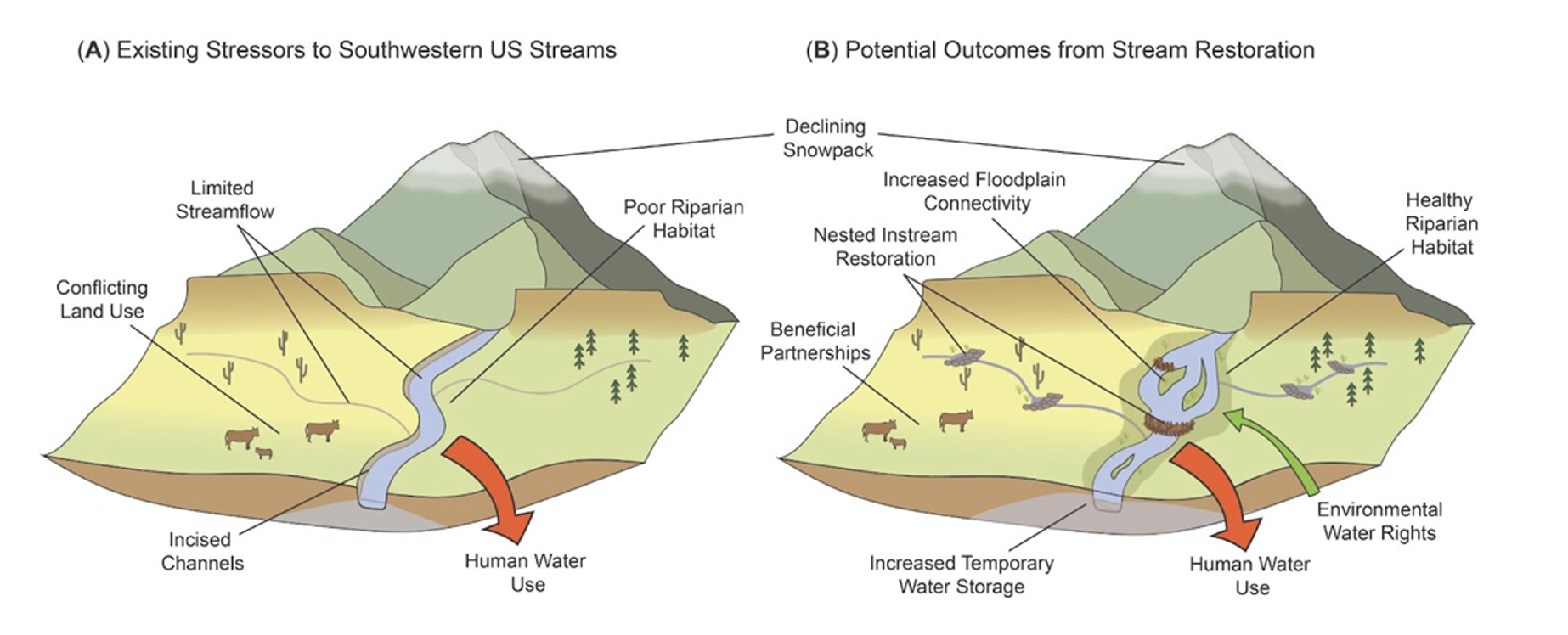Photo of beaver dam in Mackay Idaho
Trends in the Outcomes, Practice, and Law of Low-Tech Process-Based Restoration in Western Rangelands
Low tech process-based restoration (LTPBR) is increasingly used to improve river corridor resilience to diverse stressors introduced by changing land use, climate, and water usage. However, the future of LTPBR depends on multiple physical, ecological, and social factors, including the influence of water availability on LTPBR outcomes and the legal capacity for future restoration in water-limited environments. A growing body of scientific and legal literature on LTPBR allows for a quantitative, regional comparison of LTPBR projects to understand: (1) How do physical characteristics of LTPBR projects (including structure type, number, and local setting) influence the magnitude of change following LTPBR? and (2) How are social dimensions related to practitioner attitudes and water law impacting LTPBR? We evaluated data from 65 LTPBR projects in the western U.S. that used natural beaver dams, beaver dam analogues, or one-rock dams to quantify trends in commonly measured outcomes with geographic location, project size, and local precipitation. We additionally reviewed water law in five states across the western U.S. and interviewed 13 restoration practitioners to consider the social dimensions of LTPBR. Results show that LTPBR projects significantly increased water storage, sediment storage, and riparian vegetation greenness, and that outcomes vary significantly with mean annual precipitation, time since restoration, and LTPBR type. Trends suggest that LTPBR could provide expected outcomes across western rangelands even amid changing water availability. Changes to state-level water laws and perceptions of social benefits of LTPBR could support the expansion of stream restoration in rangeland streams. More monitoring and collaborations are needed to better implement, manage, and understand LTPBR projects and outcomes.

Conceptual diagram (not to scale) by J. Scamardo highlighting (A) anthropogenic and environmental stressors to headwater streams and downstream tributaries in the southwestern U.S., and (B) expected outcomes and benefits of instream, process-based restoration. Although restoration cannot remove or remediate all stressors, such as human water use and declining snowpacks, restoration is thought to slow and spread available water, which increases temporary water storage and reconnects streams and floodplains, allowing for riparian vegetation to thrive.
Co-authors: Julianne Scamardo, Will Munger, Kelly Loria, Benjamin Nauman, Junna Wang, Sara Leopold, Anne Heggli, Nancy Huntly, Michelle A. Baker, and Alison M. Meadow
Link to article published in Rangeland Ecology & Management. Download .pdf of article
The Southwest Climate Adaptation Science Center (SW CASC) Fellowship.
The SW CASC is a collaborative federal-university partnership between the U.S. Geological Survey (USGS) and seven academic institutions from across the U.S. Southwest.
I was able to participate as co-author in this restoration meta analysis via the SW CASC 2021-2022 Natural Resource Workforce Development (NWRD) Fellowship (Grant No. G18AC00320 from the U.S. Geological Survey). Our SW CASCS NWRD cohort had a core mission of creating actionable science that to build strong and authentic bridges between science and water management practices to understand future decreases in water flows on aquatic ecosystems.
 Beaver
Beaver